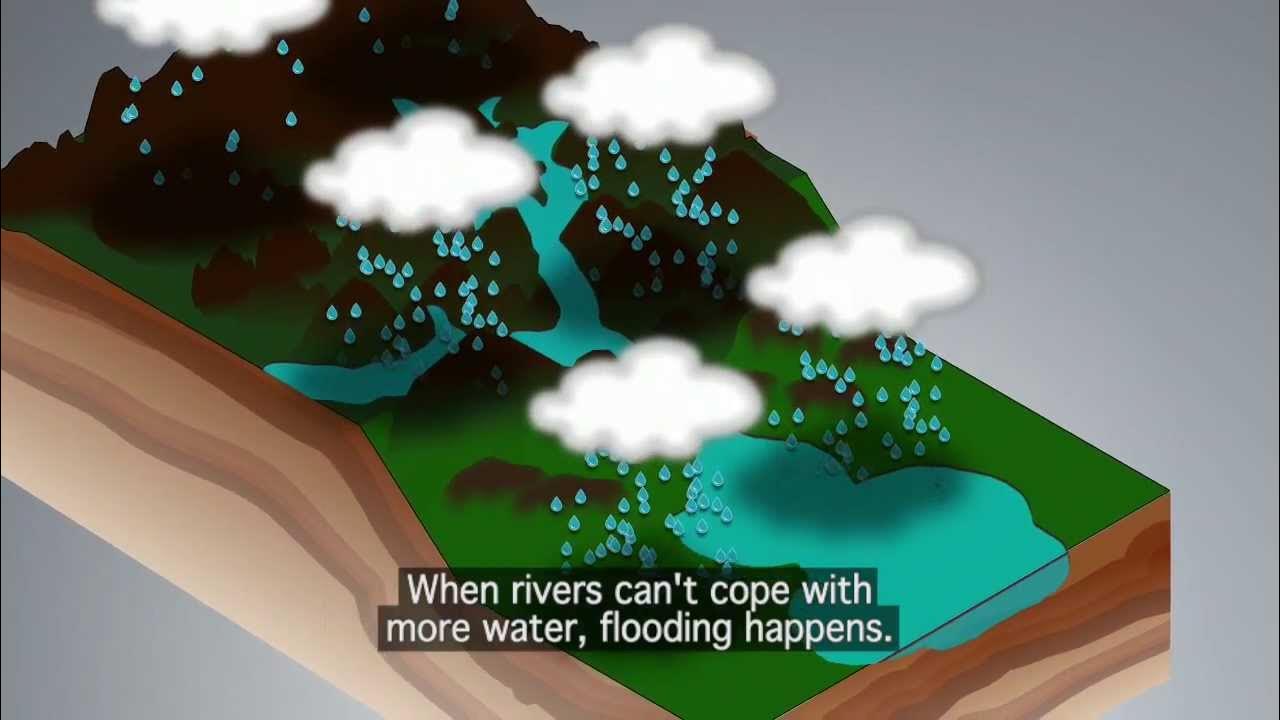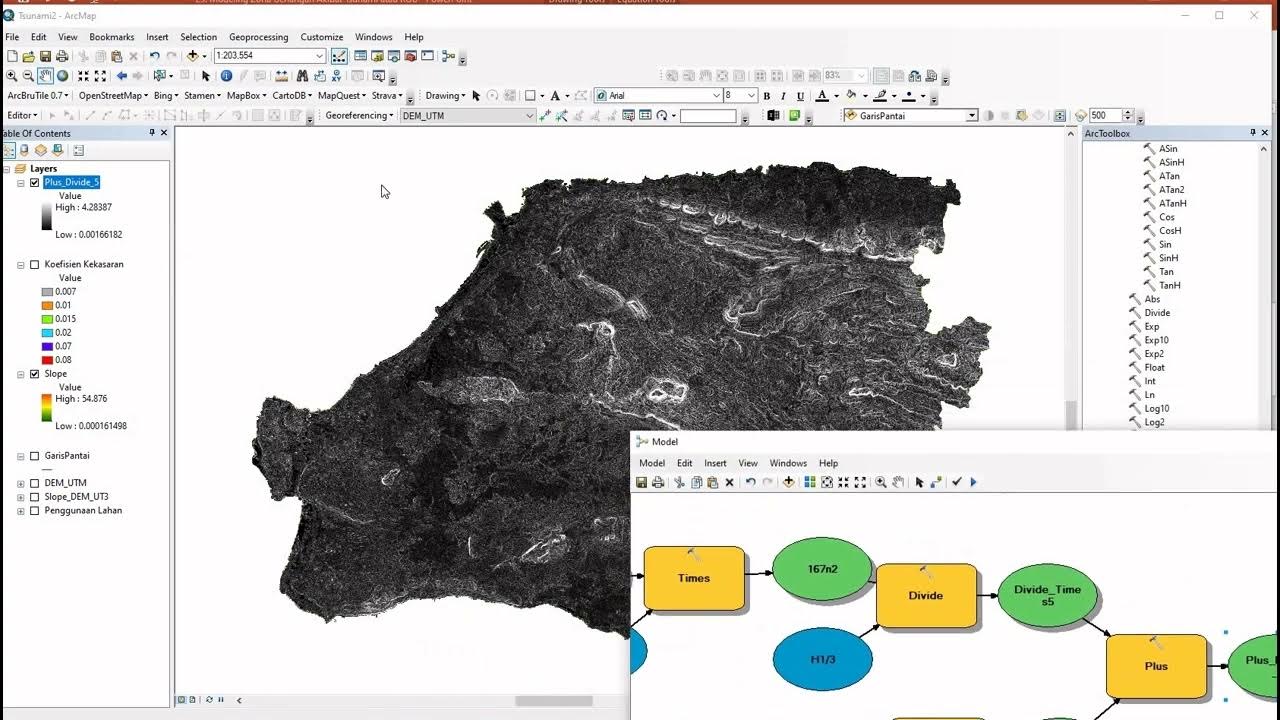Wave tank demonstration showing the impact of coastal defences on flood risk
Summary
TLDRIn this video, Dan from JBA Trust demonstrates the use of a wave tank to explore coastal and flood risk management. By testing different coastal defenses, such as vertical walls, slope revetments, recurve walls, and rock armor, the video shows how wave energy interacts with these structures and their effectiveness in preventing coastal flooding. The simulation also highlights the importance of future-proofing designs against climate change and erosion. Viewers learn how each defense performs under various conditions, with a focus on cost-benefit analysis and long-term safety for coastal communities.
Takeaways
- 😀 The JBA Trust uses physical models, such as wave tanks, to train and educate on coastal and flood risk management.
- 🌊 Coastal wave behavior is complex and cannot always be predicted with analytical equations, especially near the shoreline where waves interact with coastal features like reefs and headlands.
- 🏠 Nearshore waves are crucial because they can interact with coastal structures, leading to erosion, wave overtopping, and potential flooding of communities behind defenses.
- 🌪️ In a storm surge scenario, deeper water and larger waves can cause waves to roll over dunes, inundating the land behind the defenses.
- 🔨 Coastal engineers design defenses to minimize wave overtopping and protect properties, using physical models to test the performance of various defense structures.
- 🌊 A vertical wall can reduce wave overtopping but may still allow small amounts of water to pass through, which could lead to flooding in real life.
- 🏝️ Future beach erosion is a major factor when designing coastal defenses, requiring assumptions that beaches may have little to no sand left in the future, leading to the use of taller defense structures.
- ⛔ A 1:2 slope revetment may worsen wave overtopping by acting as a ramp for the waves, leading to more water overtopping the defense structure.
- 🔄 A recurve wall can be highly effective in reducing wave overtopping by redirecting waves back to the sea without increasing the structure’s size.
- 🪨 Rock armor is a cost-effective defense option, which absorbs wave energy and significantly reduces wave overtopping by dissipating the wave energy across the rocks.
- 🌍 Offshore defenses like submerged breakwaters can be used to prevent wave energy from reaching the coast, but they come with high costs. They can be a good alternative to beach defenses while preserving the shoreline.
Q & A
What is the purpose of the wave tank in coastal and flood risk management?
-The wave tank is used for training and education in coastal and flood risk management. It helps demonstrate how waves behave as they approach the coastline, interact with coastal structures, and contribute to phenomena like erosion, wave overtopping, and flooding.
Why is it difficult to predict wave behavior near the coastline?
-Predicting wave behavior near the coastline is challenging because waves undergo complex interactions with the coastal environment, such as refraction, diffraction, and depth-induced breaking, which alter their characteristics by the time they reach the shore.
What happens when waves break near the coastline, and why is this important?
-When waves break near the coastline, their energy is released, and they start to interact with coastal structures, leading to potential issues like erosion, wave overtopping, and flooding. Understanding how these waves behave is critical for designing effective coastal defenses.
What is a typical scenario in the wave tank's first demonstration with a beach environment?
-In the first demonstration, the wave tank simulates a beach environment where waves break and roll up the beach face without causing significant problems. However, a storm surge scenario is created by increasing water depth and wave size, leading to waves overtopping the dunes and potentially flooding behind the defenses.
What effect does the addition of a vertical wall have on wave overtopping?
-The addition of a vertical wall reduces wave overtopping compared to no defense, but still results in some water passing over. In the tank, this is shown by a small amount of water, which can be indicative of real-life situations where even small amounts of overtopping may lead to problems like erosion and flooding.
Why do coastal engineers need to design defenses that consider future erosion?
-Coastal engineers must design defenses that account for future beach erosion or sediment loss. By assuming the worst-case scenario, such as the absence of beach material, they ensure that the structures will remain effective even if the coastline changes over time.
How does a recurve wall improve wave overtopping performance?
-A recurve wall has a unique shape that redirects the water back to the sea. This prevents waves from overtopping the structure and significantly reduces the risk of flooding behind the defense, offering a cost-effective and efficient solution to coastal flooding.
Why does the addition of a slope in front of a vertical wall sometimes make wave overtopping worse?
-Adding a slope in front of a vertical wall can make wave overtopping worse because it causes waves to break and use the slope as a ramp to surge over the defense. This can increase the amount of water that reaches the shore, rather than dissipating wave energy as expected.
What advantages does rock armor offer as a coastal defense?
-Rock armor absorbs wave energy effectively by causing waves to dissipate as they hit the rocks, reducing wave height and energy. It's also a cost-effective solution. However, it can block beaches, disrupt local ecosystems, and may not always be the best choice depending on site conditions.
How does an offshore breakwater compare to other defense options?
-An offshore breakwater can prevent waves from reaching the coastline by dissipating energy before it reaches the shore. This solution can be highly effective in preventing wave overtopping, but it comes with a higher cost and potential environmental impacts compared to onshore defenses like walls or rock armor.
Outlines

Esta sección está disponible solo para usuarios con suscripción. Por favor, mejora tu plan para acceder a esta parte.
Mejorar ahoraMindmap

Esta sección está disponible solo para usuarios con suscripción. Por favor, mejora tu plan para acceder a esta parte.
Mejorar ahoraKeywords

Esta sección está disponible solo para usuarios con suscripción. Por favor, mejora tu plan para acceder a esta parte.
Mejorar ahoraHighlights

Esta sección está disponible solo para usuarios con suscripción. Por favor, mejora tu plan para acceder a esta parte.
Mejorar ahoraTranscripts

Esta sección está disponible solo para usuarios con suscripción. Por favor, mejora tu plan para acceder a esta parte.
Mejorar ahoraVer Más Videos Relacionados

Hydraulic flume demonstration

Flood Risk Assessment: Basics

Flooding: Why it happens and how we can help

Flood control expert Dr. Guillermo Tabios III on Typhoon Carina | The Howie Severino Podcast

25 Modeling Zona Genangan akibat Tsunami atau ROB

A Floating House Project Idea | Natural Disaster Management Project
5.0 / 5 (0 votes)
